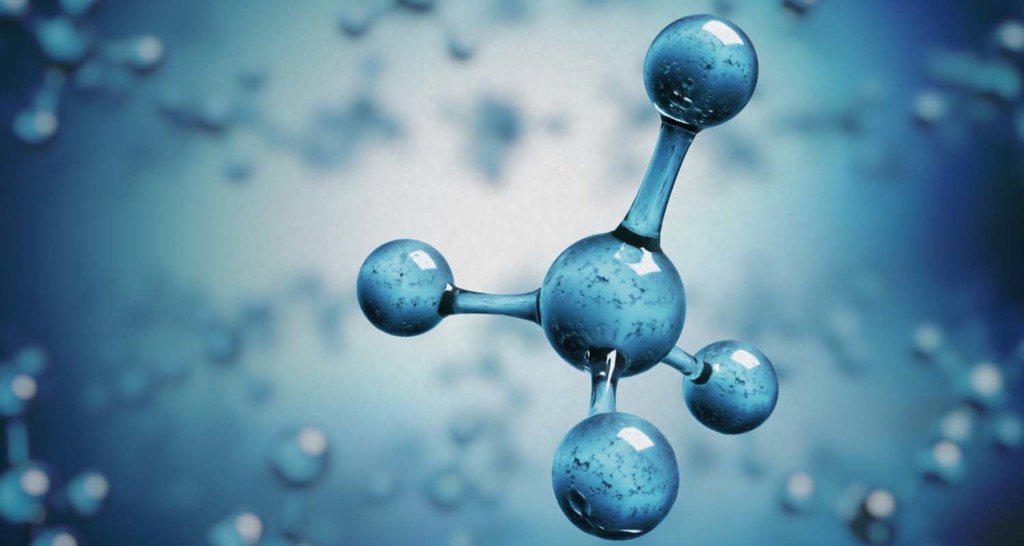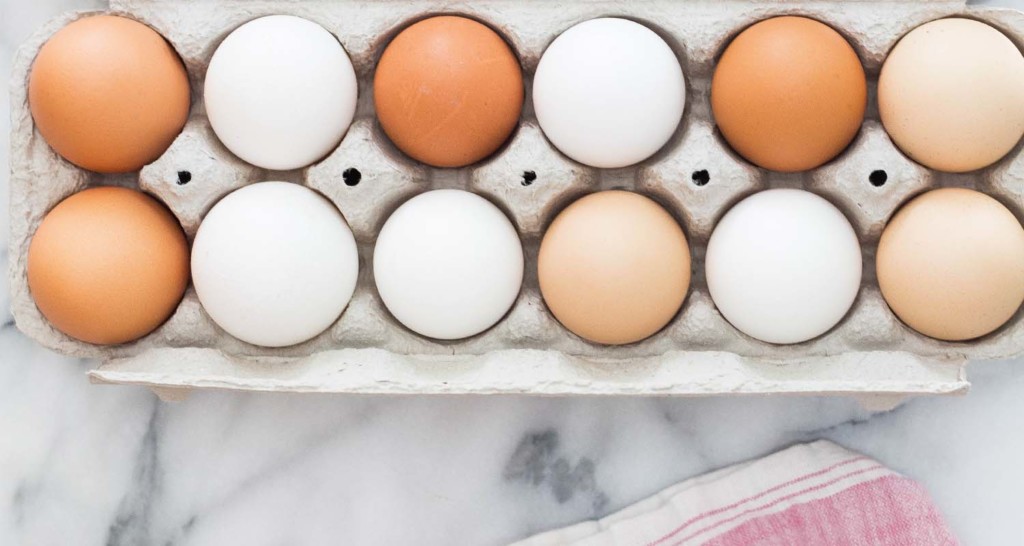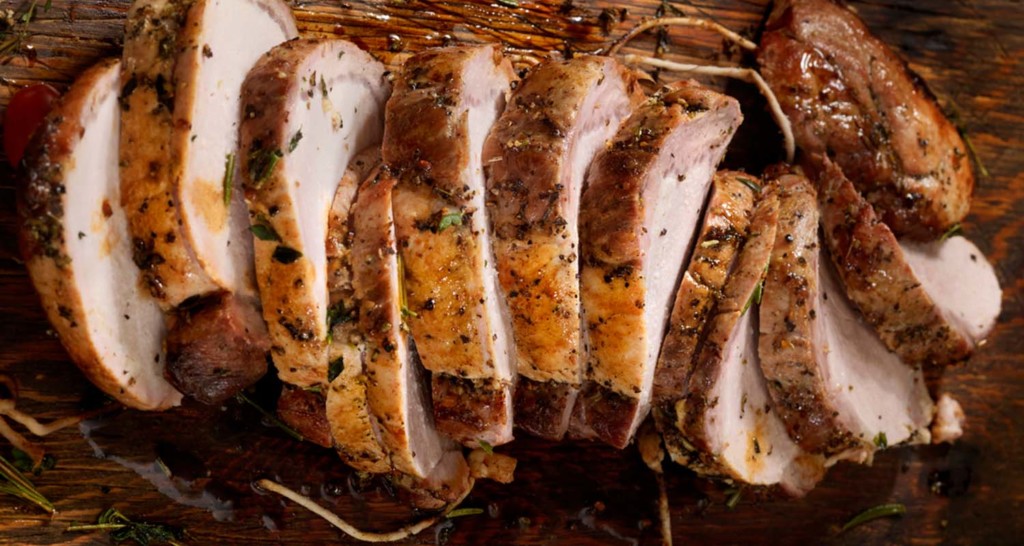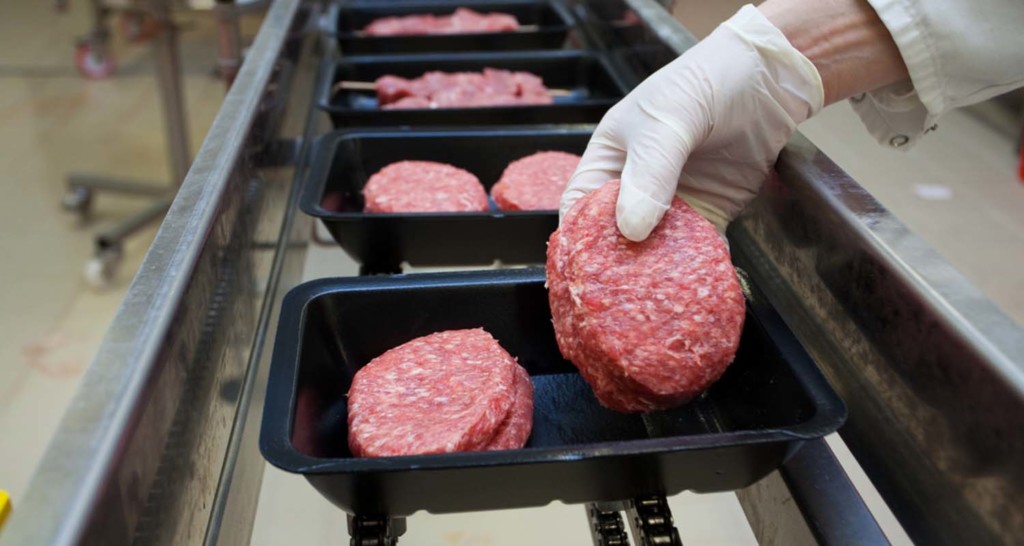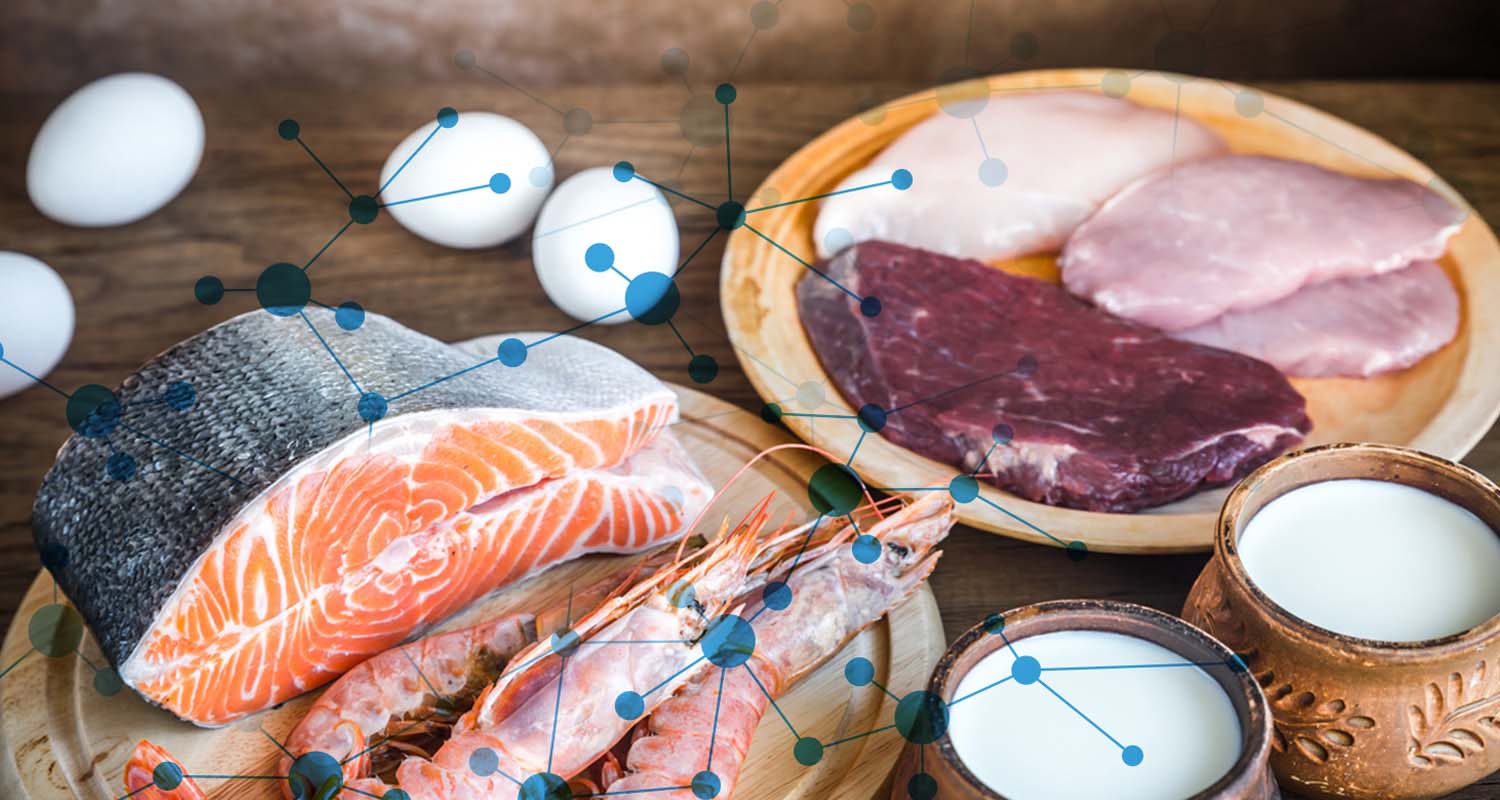
[tldr]
- When you’re following the Bulletproof Diet, roughly 20 percent of your daily calories should come from protein, but the type of protein that you eat matters.
- Protein is found in virtually every part of the body. It performs many vital functions like building and giving structure to your tissues, organs, and muscles.
- You generally want to eat complete proteins, which contain all eight essential amino acids. Meat, fish, and eggs are all complete protein sources.
- Choose wild fish, grass-fed meat, and pastured eggs.
- Eat poultry and pastured pork in moderation, and avoid factory-farmed meat, farmed seafood, and soy.
[/tldr]
When you’re following the Bulletproof Diet, roughly 20 percent of your daily calories comes from protein (the rest you get from healthy fats and vegetables.) The type of protein that you eat matters, but that’s where things get a little confusing. Is grain-finished beef pretty much the same as grass-fed? Is it ever OK to eat plant protein? And what’s the deal with chicken? Read on to discover the very best protein sources for your body.
RELATED: Get free guides, ebooks, recipes and more to supercharge your health
What is protein?
Protein is found in virtually every part of the body. It performs many vital functions like building and giving structure to your tissues, organs, and muscles; forming antibodies to fight off infection; making hemoglobin to carry oxygen around the body in the blood; creating hormones; and so much more.
Proteins are made up of tiny building blocks called amino acids. There are at least 20 amino acids, and nine of those are essential to your diet, since your body can’t manufacture them.
Think of how protein is structured in this way: The amino acids are letters. Put two or more of these letters together and you form a word — these are peptides. Then string the words (peptides) together in a sentence and you get a protein. That protein can say anything to your body like “die now” if you have scorpion venom in your system, or “grow muscles and reduce inflammation” if you eat a protein high in the amino acid cystine, or “grow more collagen” if you’re consuming a lot of glycine, another amino acid.
Related: What Is Bulletproof Protein Fasting & How to Fast Correctly
The best sources of protein
You generally want to eat complete proteins, which are proteins that contain all eight essential amino acids. Meat, fish, and eggs are all complete protein sources. Here are the Bulletproof-approved options:
- Wild-caught fish: Wild fish is high in healthy omega-3 fatty acids, vitamins, minerals, and antioxidants. Make sure you choose fish that are low in mercury like sockeye salmon, wild trout, anchovies, haddock, and sardines. Too much mercury can damage your nervous system, immune system, and heart.[ref url=”https://www.epa.gov/fish-tech/2017-epa-fda-advice-about-eating-fish-and-shellfish”]
- Grass-fed beef and lamb: Organic, grass-fed meat is hands-down the best source of protein there is. Make sure you choose beef or lamb that’s been grass-fed and grass-finished, meaning the animal only ate grass. You may be wondering whether grain-fed meat is really that much different. The short answer is yes, it really is inferior. Grass-fed meat provides you with more nutrients and less toxins than conventional meat. It’s also jam-packed with antioxidants, omega-3 fatty acids, trace minerals, and vitamins. One study found that grass-fed beef had more omega-3s and more conjugated linoleic acid (CLA) than grain-fed cattle. And that included grain-finished beef — grass-fed cows that ate grains 80 days before slaughter. The longer the cows ate grains, the lower the quality of their meat.[ref url=”https://www.ncbi.nlm.nih.gov/pubmed/16500874″]
- Pastured eggs: Most of the nutrients in eggs can be found in the yolks, so don’t choose an egg-white omelette thinking it’s the healthier choice. Go for pastured eggs — a 2007 study found that grain-fed eggs have lower levels of vitamin A, vitamin E, and omega-3s.[ref url=” https://www.motherearthnews.com/real-food/free-range-eggs-zmaz07onzgoe”]
- Grass-fed collagen protein: Collagen is a structural protein that builds bones, teeth, muscles, skin, and all other connective tissues. Eating foods rich in collagen or drinking a collagen supplement carry huge benefits — collagen plumps your skin, strengthens your joints, improves sleep, burns fat, and boosts gut health. Since people eat primarily the muscle of animals, and not the collagen-rich cartilage and organs, it’s a good idea to supplement with a grass-fed collagen protein powder. Throw it in a smoothie, or use gelatin to make puddings and gummies, and to thicken soups and sauces.
- Colostrum: This is the milk that a calf drinks for the first 1 to 2 months of its life. Colostrum is full of antibodies, growth factors, and proteins, particularly lactoferrin, which reduces inflammation and helps the gut.[ref url=”https://www.ncbi.nlm.nih.gov/pubmed/10195738 https://www.ncbi.nlm.nih.gov/pubmed/25082351 “] Choose colostrum from pasture-raised cows (you can find it in Bulletproof’s Whey Protein powder.)
- Whey protein concentrate: Whey protein helps your liver produce glutathione, your body’s master antioxidant. Glutathione mops up free radicals and supports your immune system.[ref url=”https://www.ncbi.nlm.nih.gov/pubmed/1782728″] Take 2 tablespoons a day at the most, unless you’re working out a ton, then you can up that dose to 4 tablespoons a day. You don’t want to get your entire daily protein requirement from whey — it’s high in the amino acids cysteine and methionine, which can cause inflammation if consumed in high amounts. To avoid this, add some collagen protein powder to your whey powder so you get a nice balance of different amino acids.
Related: How to Choose the Best Protein Powder for Your Body
Eat these in moderation
- Poultry: It’s ok to eat poultry like chicken and turkey a couple of times a week, but you won’t get all the same health benefits that you would from high-quality fish and ruminants. Poultry also tends to be high in omega-6s — too much of these fats can cause inflammation.
- Pastured pork: Most farmers feed their pigs grains, which fattens them up before slaughter. The problem is, the feed is often tainted with mold toxins. When pigs eat moldy feed, the mold toxins get stored in the pigs’ fat tissue.[ref url=”https://www.ncbi.nlm.nih.gov/pubmed/6231019″] Low levels of mold toxins cause people to lose their edge. At high levels, mold toxins put you at risk for serious disease like cancer, cardiomyopathy (heart muscle disease), and hypertension.[ref url=”https://www.ncbi.nlm.nih.gov/pubmed/7586128?dopt=Abstract “] If you’re going to eat pork, choose pastured pigs that were raised and finished on grass.
Stay away from these
- Farmed seafood: Eating farmed fish is just a bad idea, both for your health and for the environment. Farmed seafood is high in pesticides, toxins, parasites, pathogens, and environmental contaminants.[ref url=”https://www.researchgate.net/publication/10698966_Do_Fish_have_Nociceptors_Evidence_for_the_Evolution_of_a_Vertebrate_Sensory_System “] The antibiotics and chemicals used to treat disease in fish farms spill over into wild fish populations, damaging local ecosystems.[ref url=”https://aquaculturereform.files.wordpress.com/2011/06/bp-lobster-or-non-target-toxic-effects.pdf”]
- Factory-farmed meat: These animals are fed all kinds of junk — contaminated grains, garbage, and leftover animal parts like chicken beaks and feathers. Factory animals live in deplorable conditions rife with disease, so they’re pumped full of antibiotics to keep them alive until slaughter. If that’s not enough reason to switch to grass-fed, consider doing it for public health — the antibiotics dumped in animal feed is directly tied to the terrifying rise of antibiotic-resistant superbugs, according to the Centers for Disease Control and Prevention.
- Soy: Soy milk and soy protein like tofu are marketed as health foods, but they’re not. Soy crops are often contaminated with mold toxins, while the protein in soy is highly allergenic, especially when it’s genetically-modified (GMO). Soy also contains plant estrogens (phytoestrogens) that mimic estrogen in humans. Studies have found that soy phytoestrogens cause infertility in male rats and breast cancer growth in female rats.[ref url=”https://www.sciencedirect.com/science/article/pii/S0303720709001397″]
Related: Soy — the Good, the Bad, and the Fermented
What’s the deal with plant protein?
You may have heard of ricin, the extremely toxic poison that even in small doses can kill you. What you might not know is that it comes from the lowly castor bean. Plants contain proteins called lectins that protect themselves and their seeds from predators like bugs and other hungry animals. Plants actually have zero interest in being a food source for you. Not all lectins are bad, but the lectins in plants like legumes and beans, as well as nightshades such as tomatoes and potatoes, love the different sugars in your cells. Lectins bind to your joints, disrupt gut health, and cause bacterial overgrowth.[ref url=”https://www.cambridge.org/core/journals/proceedings-of-the-nutrition-society/article/nutritional-toxicity-of-phaseolus-vulgarls-lectins/7C72FD3202127016E8F54230F8259FC2″]
Related: Beans: How Lectins Suck Your Energy and Make Your Weak
Here’s the thing: A little bit of plant protein can sometimes be a good thing — it all comes down to how you feel after eating it. Hemp protein is your best bet. It’s high in GLA, or gamma linolenic acid, an omega-6 fatty acid that lowers inflammation.[ref url=”https://www.ncbi.nlm.nih.gov/pubmed/17168669″]
Most people don’t know this, but when you’re in ketosis for a long time, it tends to deplete GLA. So there’s a case to be made for eating hemp protein, like hemp oil, to replenish your GLA stores. Hemp is also the most bioavailable (i.e. best absorbed by the body) of all the plant proteins and has the highest immunoglobin G (IgG) — the most common antibody found in your blood that protects you against infections.
But keep in mind that people tend to get too many omega-6s in their diets already, so you want to watch out for that and not overdo it with the hemp.
